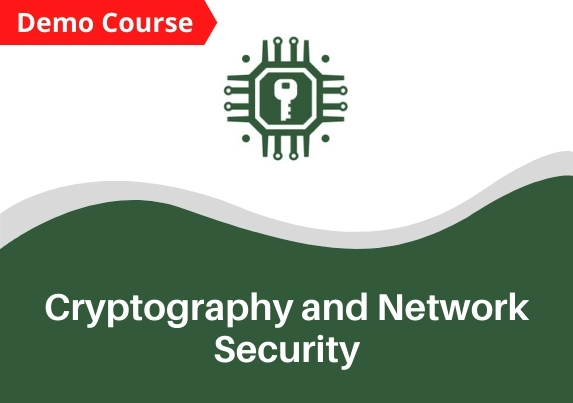About the course
In this course, you will be introduced to the areas of cryptography and cryptanalysis. You will get an overview of modern cryptography along with an introduction to number theory. After that, you will learn about probability and information theory, classical cryptosystems, cryptanalysis of classical ciphers. Then you will learn about Shannon's theory followed by symmetric key ciphers, block ciphers standards, linear and differential cryptanalysis, stream ciphers, cryptographic hash functions, and a lot more. This is completely an online course, and you can access it from anywhere in the world. So, this makes it altogether a complete package.
Learning Outcomes
After completing this course, you will be able to:
- Know about various encryption techniques.
- Understand and illustrate various Public key cryptographic techniques.
- Understand message authentication and hash functions.
- Boost your hireability through innovative and independent learning.
Target Audience
The course can be taken by:
Students: Students: All students who are pursuing any technical/professional courses, and wish to learn cryptography techniques.
Teachers/Faculties: All teachers/faculties who wish to acquire new skills or improve their efficiency in Cryptography.
Professionals: All working professionals, who want to enhance their skills by learning cryptography techniques.
Why learn Cryptography and Network Security?
With the advent of the World Wide Web and the emergence of e-commerce applications and social networks, organizations across the world generate a large amount of data daily. Data security is the utmost critical issue in ensuring the safe transmission of information through the internet. Also, network security issues are now becoming important as society is moving towards the digital information age. As more and more users connect to the internet it attracts a lot of cyber-criminals. It comprises authorization of access to information in a network, controlled by the network administrator. The task of network security not only requires ensuring the security of end systems but of the entire network.
In today's world, crypto professionals are in great demand both within the government and private sectors. NSA, FBI, CIA, think tanks, and other federal government and defense and intelligence contractors are always on the lookout to hire these individuals. Companies offering encryption, digital data services, and authentication tools are heavy in hiring crypto and security practitioners. The demand across all industries for increased computer security is growing, and cryptography is a subcategory within the career field of information security. Cryptologists are in demand in the military forces, government agencies, technology companies, banking and financial organization s, law enforcement agencies, universities, and research institutes. Depending on the profile of the organization one is involved with, the area of functioning varies. So it is worth having a go at it.
Course Features
- 24X7 Access: You can view lectures as per your own convenience.
- Online lectures: 22 hours of online lectures with high-quality videos.
- Updated Quality content: Content is the latest and gets updated regularly to meet the current industry demands.
Test & Evaluation
1. During the program, the participants will have to take all the assignments given to them for better learning.
2. At the end of the program, a final assessment will be conducted.
Certification
1. All successful participants will be provided with a certificate of completion.
2. Students who do not complete the course / leave it midway will not be awarded any certificate.







